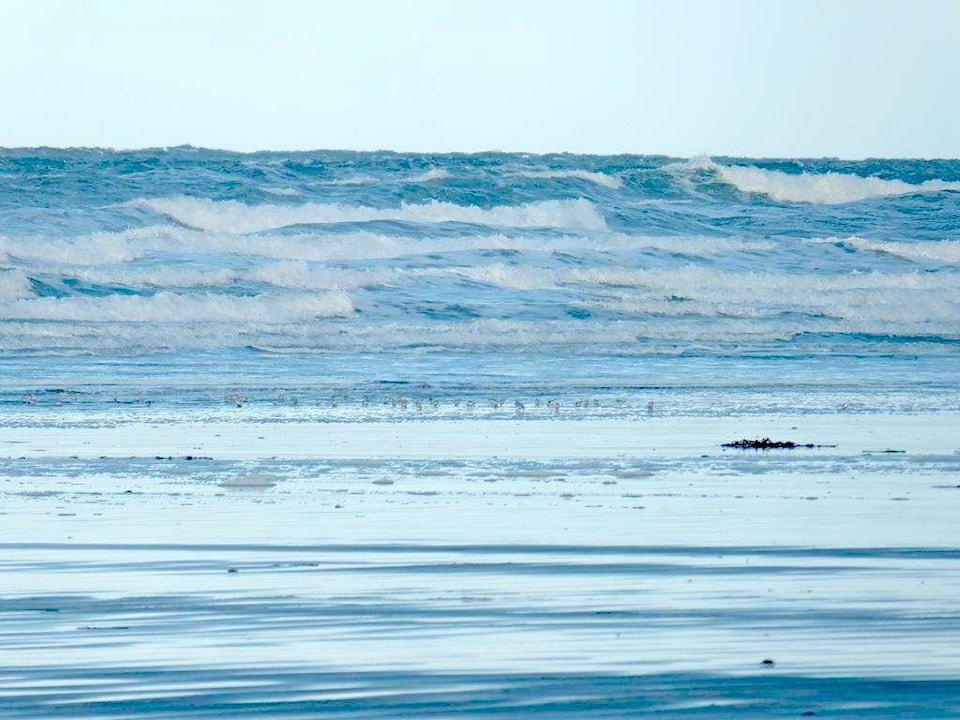By Margo Hearne
There is no place to hide when the weather’s powerful forces crash around us.
The blue ocean and racing white foam were stunning, but it was frigidly cold and the bracing northeaster never let up for a moment. We were dressed for the weather — three woolly layers can take you a long way — but we could hardly stand up, never mind focus our optics on the birds streaming by. We tried to hide but it was no use. A northeaster finds every tiny chink with its frosty breath. We had to be inspired by the birds. They kept flying by. Gulls, murres, loons and scoters. One single little Harlequin Duck appeared and disappeared in the crashing foam and a Bufflehead, only one, did the same. It’s a wonder they could find anything to forage.
Rose Spit is barely recognizable from what it once was. There used to be a weather station at the tip and lots of grassland between the treeline and the beach, but it’s all eroding away. What is left looks like a boneyard of dead trees and naked stumps. How did the dead trees get there, and how long have they been buried? Were they part of a forest that once grew and was buried by encroaching sand? They don’t look like deadfall or lost logs from a passing barge because many roots and branches are still attached. Has anyone done a geological study of the area and published a report? It would be good to know.
While the tip of the spit is eroded and exposed, back by the treeline a forest is growing in what was once grass-covered dune. The tiny spruce saplings of 30 years ago are now almost 30 feet high. The whole area continues to be fashioned by mighty elemental forces and is totally out of our control. The only thing within our control was whether or not we should leave before we too became part of a lost forest. It’s the big question every year. Will we survive the Rose Spit count? So far, so good.
So, what did our crew of three (Martin, Peter and Margo) find? The highest number of Herring Gulls so far in winter flying with the Mew, Herring, Thayer’s, Glaucous-winged and Western Gulls. Those dainty little Black-legged Kittiwakes travelled in small waves just offshore. So did the four Sooty Shearwaters that rose and fell in the blue distance. High numbers of Common Murres (246) swept along barely within optic range and 41 Pacific Loons flew with their Common and Red-throated kin. One Yellow-billed Loon flashed by and 14 Long-tailed Ducks held their own against the tossing sea. We found all three species of Scoter: Black, Surf and White-winged. We had to leave for treed shelter where we found one Northern Shrike, not seen at the spit since 2004. There we also found a lovely Bohemian Waxwing — a new species for this, our 33rd CBC at the spit. On the way home, we found a lone Black Oystercatcher hanging out with a gull on the very edge of the rocks at Yakan.
Total species: 41. Total number of birds: 1,456.
